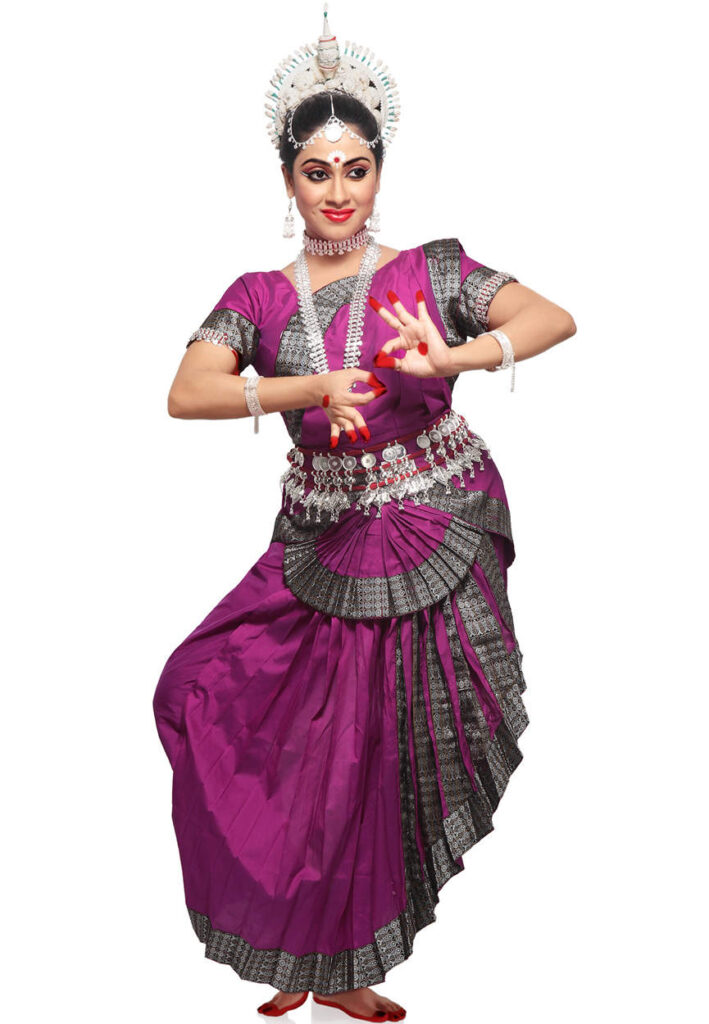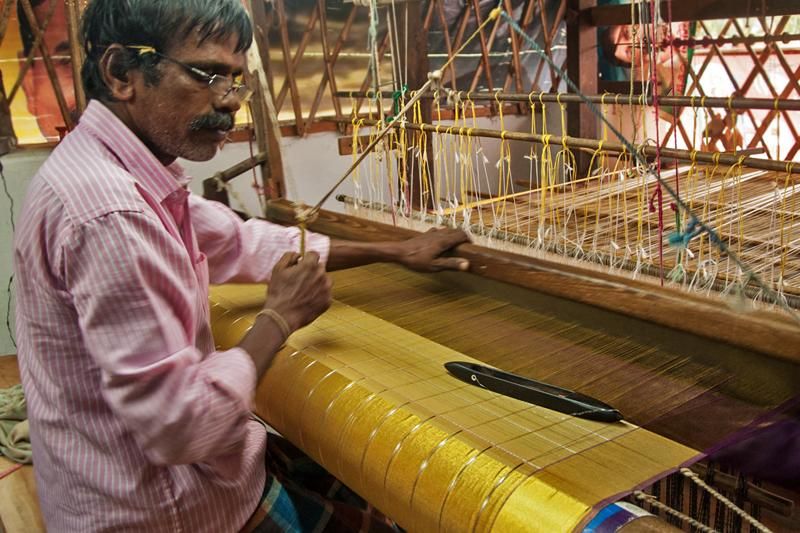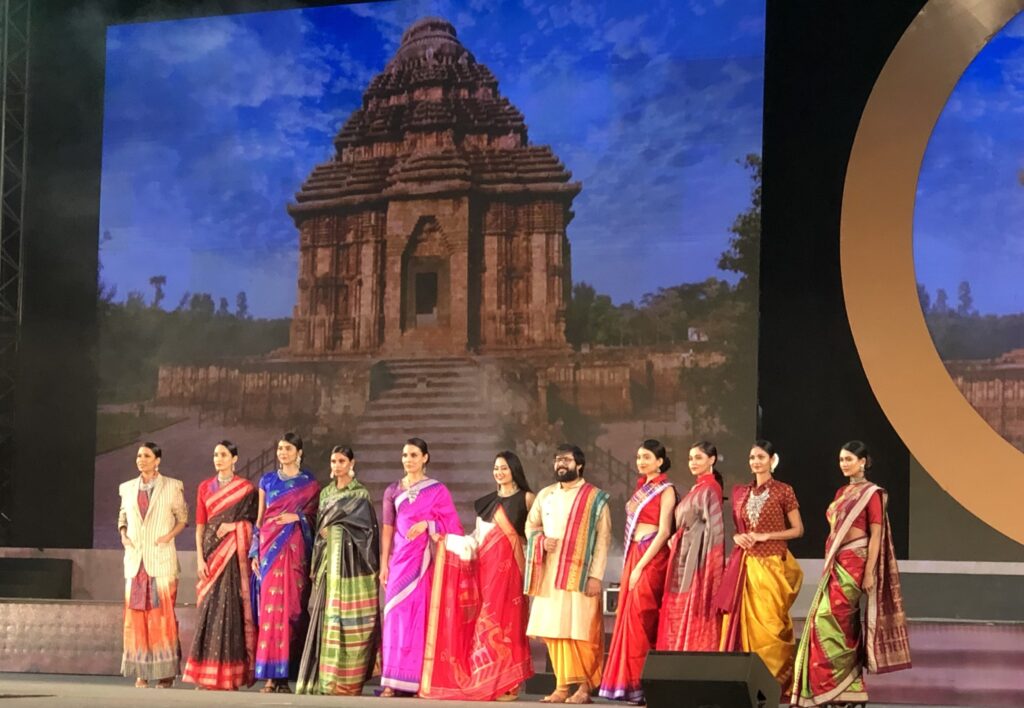Bhaskar Parichha
What’s common between the late Indira Gandhi, Manmohan Singh, Aishwarya Rai Bachchan, Montek Singh Ahluwalia, and Dilshan Tillakaratne? Their love for the Odissi saree. Traditional Indian sarees are becoming increasingly popular not only in neighboring countries but also in the US, the UK, Italy, Poland, and even China.
Ironically, when urban women in India are busy picking up anything cool that comes with a western tag, their peers in the west are increasingly draping themselves in Indian sarees. And with the demand for sarees significantly on the rise in overseas markets, handloom weavers from Odisha make sure to cash in on the global saree mania.
The Odissi saree (or sari, if you prefer) has a long history that has continued despite time’s ravages. Deeply religious. The Odia women, dressed in their intricately-designed nine-yard long fabric, are deeply religious and a natural extension of a young married Odia woman with a piece of traditional sari wrapped up all over the body is a grand spectacle even today in Odisha’s up-market society where the wardrobe of the Odia woman has not yet been infiltrated by modernity.

Odisha’s handloom sarees can be classified into three broad categories- the Ikat pattern, the Bomkai variety, and the tribal style. Since ancient times, Ikat and Tie and Dye sarees have been popular. The discovery of Ikat textile cloth found in a Pharaoh’s tomb pointed out a 5,000-year-old trade connection with India. The Ikat tradition of Odisha is a very intricate process of Tie and Dye i.e. knotting selections of yarn before dipping them in separate colors one at a time and finally weaving them to produce the most delightful designs in multi-hued tones. The motifs are drawn from the richness of nature. Silk threads are used both for the warp and the weft. The weft and warp or both are tie dyed before weaving to create designs on the fabric. The Ikat technique is commonly known as ‘Bandha’ in Odisha.
The making of a chaste Ikat saree is so meticulous that it takes between six and seven months to produce a piece. The various color combinations add grace to the saree. Traditionally, Odia women dress in sarees of blue, red, magenta, and other deep colors. Nuapatna, near Cuttack on the coastal plain, Sambalpur, Bargarh, Sonepur, and Boudh districts in the hinterland are the major saree-producing regions.

Jagannath culture has a close relationship with Odissi Sarees. The four basic colors of the Puri deities – black, white, red, and yellow—are extensively used in the sarees. Temple motifs, including the lotus, conch, and wheel, indicate a strong affinity for the traditional. However, this has of course undergone vast changes and weavers try to adapt the designs to popular taste.
The second type of saree is the ‘Bomkai’ pattern. Like the Ponchampally saree of Andhra Pradesh, the Bomkai saree is named after the village in southern Odisha where the craft is practiced. These saris, woven traditionally for the local aristocracy, use a heavy low count cotton yarn that is dyed in bright colors mostly black and red along with silk fabrics.

Using a time-consuming weaving technique, the warp threads are cut and then retired to different colored warps to create the unusually large pallu. This technique is locally called ‘muhajodi’ (or pallu with joined threads). The Bomkai sarees come in elegant designs and enchanting colors. Most Bomkai sarees have small fish woven into the border. The fish represent prosperity and good health. These sarees are much in demand owing to their traditional look as well as their discrete color palette.
Then there are tribal sarees, scarves, and woven fabric lengths from the Koraput-Bastar region. These sarees are woven in heavy-count cotton ranging from 10 to 20. The weaver employs shrine-shuttle interlock patterning, which results in infinite combinations both in scale and volume. The natural dye coloring used is derived from the deep red dye madder, which is extracted from the root of the Indian Madder plant. When the maroon color is darkened with iron sulfate, it becomes a vibrant brown. These colors when combined with the unbleached off-white color of the yarn produce dramatic results. The designs used have an underlying symbolism and are largely inspired by nature or by objects of daily use.
The weavers of Odisha also produce pictorial saris that are woven for the rural market. Not very appetizing for urban customers, these saris are woven with architectural building patterns, religious temple outlines, landscapes, and often objects that figure large in the mindscape of the weaver including even airplanes!

The Bandha or tie-and-dye sarees from Sambalpur are the finest examples of double ikat. The sarees from Nuapatna in Cuttack district are relatively cheaper than the Sambalpuri sarees because the yarn used is of the cheaper Malda variety. The tie-and-dye technique of Odisha is different from that of Gujarat and Rajasthan. Here, the yarn is first tied in portions and each section is dyed in a different color according to the design. Once the weaving is finished the designs emerge. One distinguishing feature of Odissi sarees is that the design is prominent on both sides of the fabric. In spite of the complexity of weaving, traditional weavers do not use any graphic designs on paper.
The Odissi saree has yet another signpost- the distinctive black-and-white squares. They are replicas of a chessboard. Equally fascinating are the names—Vichitrapuri, Chandrika, Nabagunjar, Asmantara, and Krishnapriya. The earlier yarns of coarse cotton have been replaced with fine cotton, silks, tassar, and a cotton-silk mix known as ‘bapta’. Gold thread and tissues are also used to enhance the patterns.
The other typical types of silk and cotton sarees from Odisha are the glossy Khanduas having elaborate designs. In addition, the rich red Jotai Ikat with rows of stylized trees, and temple spires on the borders. The calligraphy textiles of Odisha attract buyers from across the region, particularly the verses (shlokas) from the ‘Geeta Govinda’ woven into cloth. Historical records dating back to 1719 AD show that silk sarees with Geeta Govinda verses were donated to the deities in the Jagannath Temple of Puri. This unique tradition continues to this day with weavers from Nuapatna specializing in these textiles.
Tags: #OdissiSaree #OdishaHandlooms #traditionalweavers #HandloomsCollection



























